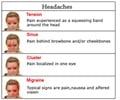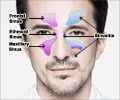A new study claims that endoscopic sinus surgery can significantly relieve symptoms of chronic rhinosinusitis - inflammation of the sinus cavities.
The research team, led by a Georgetown physician, conducted the first large-scale analysis of surgical outcomes from the procedure.In the May issue of Otolaryngology Head Neck Surgery, researchers found that symptoms usually associated with the chronic condition, including nasal obstruction, facial pain, postnasal discharge, headaches, and impaired smell, all substantially improved after endoscopic sinus surgery.
"This kind of surgery is indeed beneficial to patients when standard medical treatment doesn't resolve the condition," says the study's lead investigator, Alexander C. Chester, MD, a physician and clinical professor at Georgetown University Medical Center. Two other physicians from St. Louis University School of Medicine collaborated in the study.
Endoscopic sinus surgery is an extremely common procedure - about 200,000 procedures are performed each year - yet this is the first meta-analysis of symptom relief following the surgery, Chester says. It was conducted by examining 21 different published studies, which included 2,070 patients, analyzing improvement for each symptom.
"Reports of relative symptom relief vary across studies, so it was important to pool the study results. We wanted to know not only if symptoms improve overall, but if they improve to a similar degree, and if these benefits last," says Chester.
"Our findings offer reassurance that, with minor exceptions, individual symptoms usually improve substantially and similarly following surgery," Chester, an internist, said.
Advertisement
They also found that improvements do not decrease over time, as some smaller studies had suggested.
Advertisement
SRM













